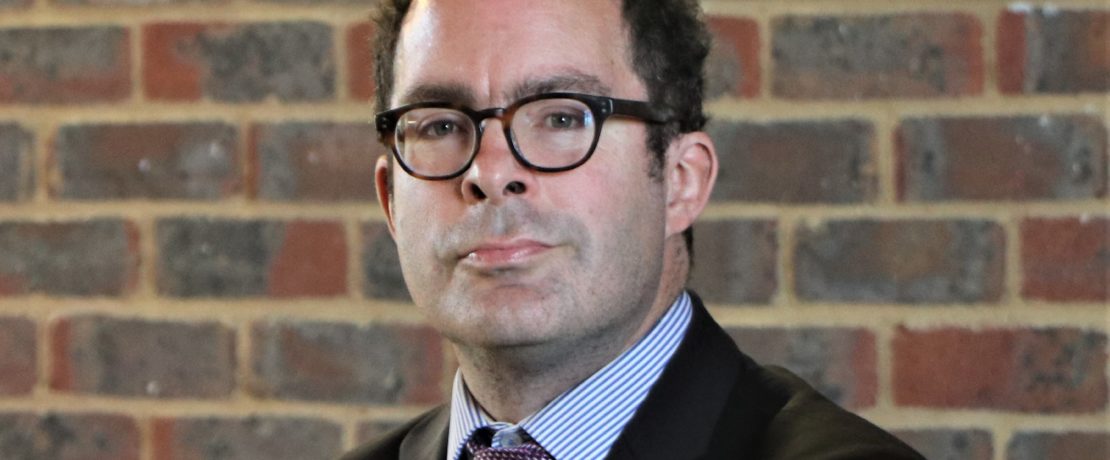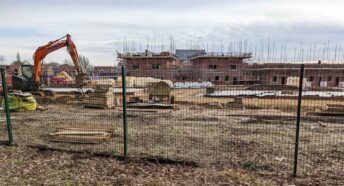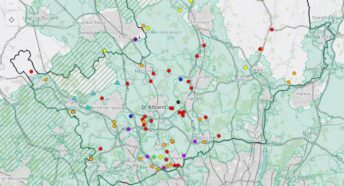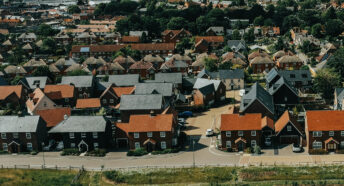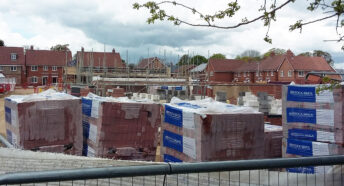Our current work on planning and Green Belt, an update from National CPRE
We were delighted to welcome Paul Miner, Head of Policy & Planning at National CPRE, as our keynote speaker at our recent Annual General Meeting held on 1st October.
Paul provided a useful update on the current state of Green Belt land in England, and discussed the most recent government proposals on planning policy. The text of his engaging and illuminating speech is reproduced in full below. Following his talk, Paul fielded about a dozen questions from our members, providing everyone with straightforward answers.
We extend our thanks and appreciation to Paul for coming to Hertfordshire to speak with our members. This was no mean feat as he travelled to us by rail, notwithstanding the rail strike in effect that day.
Paul’s talk to CPRE Hertfordshire
Many thanks to CPRE Hertfordshire for inviting us here today. It’s always a pleasure to come to this part of the world where I’ve been before for walking, cycling and friends’ weddings.
I’ve been asked to talk about our current work on planning and Green Belt. I’ll say a bit about:
- current policy context;
- the recent government record on both protection and enhancement;
- the priorities of the current government; and
- set out what CPRE plans to do next.
I’m a chartered town planner and have worked for the national charity for over 20 years now, and Green Belt has always been one of my key passions, having been brought up on the southern outskirts of Bath where Green Belt is literally the countryside next door. CPRE is and will continue to be the country’s leading Green Belt advocate. Our current top priority campaigns are on the planning system more generally, and on extending the nation’s hedgerow network. In the coming year we’ll also say more on energy issues such as solar panels on rooftops, rural energy efficiency and pushing back on attempts to allow fracking.
Current policy, to both protect and enhance the Green Belt
It’s worth setting out where we currently are on Green Belt in terms of government policy and political pledges. The current policy is set out in the 2019 National Planning Policy Framework and online Planning Practice Guidance which seeks to maintain our fourteen Green Belts overall as a permanently open belt of land around our largest or most historic towns and cities. However, individual planning authorities can amend boundaries of Green Belts through local plans, either directly or by giving policy sanction for neighbourhood plans to do so. Before this can happen there should be evidence that the scope to develop brownfield land has been considered. Also, local plans should identify ways in which the Green Belt should be enhanced.
The current government was elected on the back of the 2019 Conservative manifesto which pledges to both protect and enhance the Green Belt. From CPRE’s perspective both are equally important. Green Belt planning policy is primarily about preventing urban sprawl by keeping land permanently open, and this should continue. However, CPRE wants Green Belt land protected because it is primarily countryside. And in turn we want to see a more beautiful, peaceful and accessible countryside for all to enjoy.
So how has the government’s action matched up to its pledge?
On protection, our latest State of the Green Belt report in 2021 found:
- The current and future threat of housing development faced by Green Belt land continues to be unprecedented. There are currently 257,944 homes proposed for greenfield land removed from the Green Belt in advanced local plans, which remains a high level of threat in comparison to our previous reports. We are likely to see this number increase in the future, as the government’s proposed method for calculating housing need will put extreme pressure on Green Belt. For example, in London there will be a need to find space for an excess of 177,907 homes beyond what current London brownfield land can accommodate, resulting in pressure on the Green Belt.
- Developments in the Green Belt are land-hungry, and are not providing the affordable homes we need to face the housing crisis; the majority of developments are on land which was previously greenfield. Of the developments on Green Belt land between 2015/16 and 2019/20, only 10% of these are considered affordable by the government. Furthermore, they are being built at a density of 14 houses per hectare, which is far below that of developments outside the Green Belt. Of the Green Belt land developed, 74% of this was previously greenfield land, an increase of 8% since the previous report.
On enhancement, in May we did the first analysis in over a decade of the extent to which Green Belt land was being managed for nature and public benefits through ‘agri-environment schemes’ (AES) agreed between government and landowners. And this found:
- The overall area of the countryside around towns covered by AES was already low in 2007 (38% compared to 47% of all of England). Within this, AES schemes covered 570,000 ha of Green Belt land: equating to 35% of all Green Belt land, and 53% (compared to 67% across England) of all Green Belt land classed as usable for agriculture — the ‘utilisable agricultural area’.
- Levels of coverage of AES in the Green Belts are relatively poor, compared to England as a whole. Between 2007 and 2020 (and despite a small increase since 2018) coverage in the Green Belts was just under 310,000 ha, compared to just over 3.8m ha for the whole of England. 19% of all Green Belt land is covered as of 2020, compared to 28% of England. We have assumed, based on the 2007 figures where they are the most recent available,that only just over a quarter (28%) of the utilisable agricultural land in the Green Belts is now covered by agri-environment schemes. By contrast 42% of all utilisable agricultural land in England is covered by AES.
- Our Green Belts are getting a relatively low share of environmental improvement funding under AES, relative to their area. Our analysis of agri-environment agreements in force as of 2020 reveal a committed spend of £3.2 billion (this stretches over several years and in 2020 payments totalling £300 million were made); of this, about £510 million (15%) is committed to the countryside around towns. Within this, only £230 million (7.25%) is committed to Green Belt land, despite Green Belts covering 12.5% of England, containing 11% of England’s farmland, and being the countryside next door for half of England’s population.
Indications so far from the new government
But of course in the last few weeks we have a new prime minister and effectively a new government. What indications have we got so far?
The record of Liz Truss and Simon Clarke – the new Cabinet Minister responsible for planning – suggest they will seek to change things and deregulate the system in the name of free market ideology. Clarke has given an interview to The Times today in which he claims that the Green Belt is ‘larger today than it was when Margaret Thatcher came to power’ and then says this is ‘an extraordinary state of affairs’. Leave aside that if Green Belt has increased in area, this is purely because of adopted local plans confirming boundaries that had been proposed decades earlier. Surely that is something to celebrate rather than a problem as he appears to suggest. And the overall increase in Green Belt area masks substantial changes over the past 10 years in particular in the areas where it is most needed – on the urban edge.
This week we have seen proposals for Investment Zones and a speeding up of the infrastructure planning regime for large power stations and roads being published in the Growth Plan. In themselves, these are not a major concern for Green Belt areas. However, we also still have the Levelling Up & Regeneration Bill before parliament. This proposes to introduce ‘national development management policies’ which could override local plan policies. This is more concerning as it might effectively weaken Green Belt protection in many areas on the one hand, and on the other make it more difficult to get good quality and affordable homes in areas where development is acceptable in principle.
But no less concerning for the countryside is what might happen if the government goes through with plans to water down its proposed reforms to farming policy. We need more ‘public money for public goods’ if we are to safeguard the Green Belt and make it more wild and accessible in future, not just a return to rewarding landowners for simply owning land. Enfield Chase and Walthamstow Wetlands are exciting portents of what we should be expecting.
Next steps for CPRE:
- We’ll do another State of the Green Belt report in early 2023
- We’ll also do a report highlighting where the government obsession with housing numbers has led to local decisions being overridden
- Continue to work on the Levelling Up and Regeneration Bill and on the proposed Investment Zones and Planning & Infrastructure Bill
- Continue to work on farming policy and call for more investment in environmentally sensitive farming in Green Belt areas
